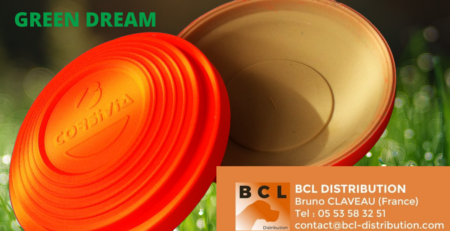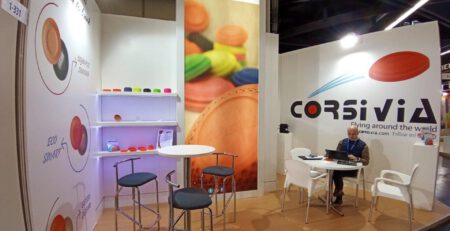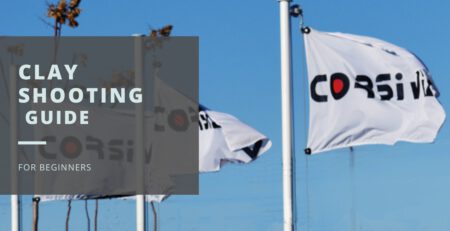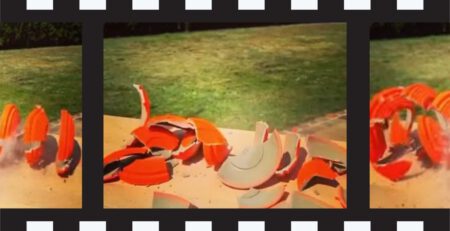6 KEY POINTS TO CONSIDER WHEN CHOOSING YOUR ECO-FRIENDLY CLAY TARGET SUPPLIER
Eco sells! That’s the reality. And anyone who tells you differently is lying….
There is a general awareness of any product that helps to protect the environment, and this is a great publicity for any company that wants to promote its products as ecological, even if they aren’t!
Making an eco-friendly target involves much more than just using the right raw materials, although you should always make sure that the materials are the right ones.
Making an ecological clay target that offers your customer all the guarantees means keeping a close eye on your entire production process.
How can you know if your supplier of eco-friendly targets does just that?
In this article, we are going to give you the 6 key points to consider when it comes to choosing your supplier of ecological clay targets so that you don’t get taken for a ride.
Let’s go!
KEY NUMBER 1 – ECOLOGICAL AND QUALITY CERTIFICATION
First and foremost…
Your supplier of ecological clay targets must maintain strict quality control of its raw materials, its production process and its final product.
It’s pointless if your supplier says that they make eco-friendly targets if they don’t pay attention to the production process used to make those targets.
There will be manufacturers who will tell you that it’s not necessary. That their “ecological” targets meet PAH content standards. But who assures you that their entire production process meets those standards as well?
Every year, Bureau Veritas audits the PAH content of Corsivia’s Green Dream target and the entire production line we use to manufacture it, thus ensuring exceptional quality to all our customers.
(insert image of the new certificate)
Likewise, each year, Bureau Veritas renews our ISO 14021 certificate, which certifies us as a company committed to the environment across all the departments of our company, every year.


KEY NUMBER 2 – ENVIRONMENTAL CODE OF CONDUCT
Your eco-friendly target supplier needs to have an environmental code of conduct in place in all departments, that is, the entire company team must meet certain responsible environmental behaviour standards that consciously seek to protect, preserve and/or minimize the negative impacts of the company’s operations on the environment.
Every decision made during the production process or before any business activity must respond to responsible environmental conduct.
We have adopted the three “Rs” of environmental awareness at Corsivia: reduce, reuse and recycle. This is manifested through actions like the efficient use of our resources (energy, cardboard, plastic, etc.) without sacrificing product quality, the sorting and recycling of waste and the reuse of materials.
All this means we can:
● Control the use of environmentally harmful products.
● Purchase green energy, whenever possible.
● Prevent any discharge of untreated sewage or chemical spills.
● Reduce noise and air pollution.
KEY NUMBER 3 – OFFSETTING CO2 FOOTPRINT
Equally important as having an environmental code of conduct are the actions that your eco-friendly target supplier takes to offset the CO2 footprint it produces through its production process.
The carbon footprint is the amount of greenhouse gas emissions directly or indirectly produced by an individual, organization, event or product.
Practically every activity we do and every product we consume and use involves energy consumption, which means we are contributing to emissions into the atmosphere and, despite not wanting to, we contribute to global warming.
We must change certain habits to reduce our carbon footprint, substituting old habits for new ones that are more environmentally friendly.
As far as the manufacture of shooting targets is concerned, manufacturing and using 25 targets made with coal tar pitch isn’t the same things as doing the same with 25 targets made with rosin resin.
At Corsivia, we conducted a study to determine the amount of CO2 that we emit to the environment in each of these two scenarios:
| In terms of CO2, manufacturing and using 25 coal tar pitch targets is the equivalent of… | In terms of CO2, manufacturing and using 25 rosin resin targets is the equivalent of… |
| ● Harvesting 1.1 kg of rice. ● Eating 165 grams of beef. ● Harvesting 1.3 kg of tomatoes. ● Drinking 3.64 bottles of beer. ● Eating 1.3 hamburgers. ● Travelling 6 km in a diesel car. ● Travelling 5.29 km in a gasoline car. ● Travelling 18 km by bus. ● Leaving the computer on stand-by for a day and a half. | ● Harvesting 0.5 kg of rice. ● Eating 88 grams of beef. ● Harvesting 0.7 kg of tomatoes. ● Drinking 2 bottles of beer. ● Eating 2.5 hamburgers. ● Travelling 3.2 km in a diesel car. ● Travelling 2.81 km in a gasoline car. ● Travelling 9.6 km by bus. ● Leaving the computer on stand-by for 23 hours. |
Prepared by: IK Ingeniería, year 2016 Source: Internal data: information provided by the company External data: CML-IA baseline v4.2/ EU25 – Global warming (GWP100a) and CML-IA baseline v4.2/ EU25 Global warming (GWP100a) http://www.eco2greetings.com/carbonize.html
The switch is worth it, don’t you think?
KEY NUMBER 4 – GREEN SUPPLIER MANAGEMENT
What’s the point of your ecological supplier complying with all the keys to ensuring their authentic commitment to the environment if their suppliers do not?
If they don’t already do so, it’s important that your ecological supplier encourages environmentally friendly practices among its suppliers.
You should take on the role as a driver for your suppliers, demanding that they also develop environmentally sustainable behaviours.
At Corsivia we have annual meetings with our suppliers where we share our procedures and potential actions for improvement that we can implement across all our processes.
KEY NUMBER 5 – ENVIRONMENTAL COLLABORATION WITH CUSTOMERS
Your supplier of ecological clay targets complies with all the standards to ensure little or no impact on the environment. What about you?
Your supplier should collaborate with you in defining environmentally friendly practices. If they don’t already, all you must do is ask!
At Corsivia we team up with our customers to implement the following initiatives:
● Use of eco-friendly targets and/or target collection.
● Advice for the collection of lead.
● Advice and assistance for the selective sorting and recycling of packaging.
● Collaboration on reducing the noise emitted by the shooting and other activities on the range.
● Planting of trees to absorb the CO2 emitted (neutralization of the carbon footprint). Each tree planted is equivalent to the production of 15 boxes of our traditional target or 30 boxes of our Green Dream target.
KEY NUMBER 6 – ECOLOGICAL CLAY TARGETS
And, of course, your supplier must be able to guarantee that the targets supplied are ecological and eco-certified by international organisations.
At Corsivia, we have been conducting regular annual on-site audits at our facilities every year to ensure that our eco-friendly targets meet each of these standards:
Our Green Dream target is manufactured with rosin resin, which is sourced from pine resins and does not contain Polycyclic Aromatic Hydrocarbons (PAH).
Our Eco Smart target is made from synthetic resins and contains <10ppm Polycyclic Aromatic Hydrocarbons (PAH).
Our Innova target is made of synthetic resins and contains around 50ppm Polycyclic Aromatic Hydrocarbons (PAH).
Tell us, now that you know the 6 keys to choosing your eco-friendly target supplier, are you going to follow them?
We hope so. And, if you need any help or support with your environmental management, don’t hesitate to ask us.
Were you already aware of all these keys?












